Model Shoot at 27 Meters by Adam Leaders
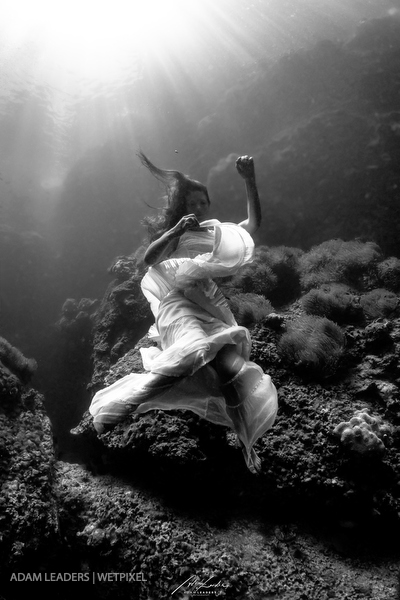
Story of a model shoot 27 meters underwater… On a shipwreck
By Adam Leaders
I don’t know if this is a term yet but if not I am going to coin it right now: “Extreme Photography” I guess I would define it as the act of taking a photo or portrait where the execution and technique of the picture are as important as the aesthetic value. It has proved deadly as was documented with some famous instagramers not too long ago, falling off of buildings taking selfies in dangerous, from dizzying heights. Now to be clear that was not our intentions when we dreamed up this shoot, nor was it our intentions to do something just for danger’s sake or attention. We were inspired by the fantastic Canadian photographer and conservationist Benjamin Von Wong and his shoot entitled: 2 Models, 7 Divers In An Underwater Shipwreck ( link to article). In this shoot, Von Wong took models down to 25 meters and shot them on the USS Liberty Wreck in Bali, Indonesia, and the results were stunning.
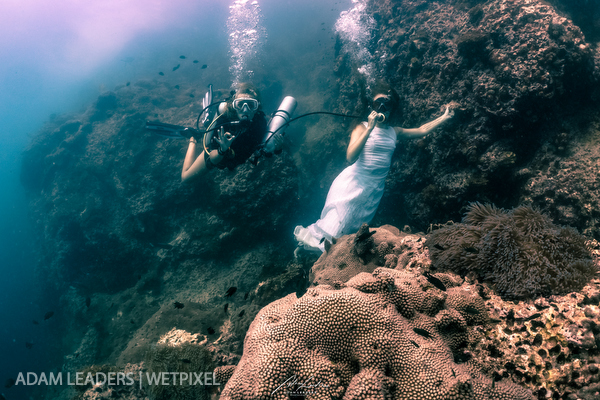
At the time model, Julia Pretzel and I were living and working on the tiny island of Koh Tao in the Gulf of Thailand, me as a full-time photographer and Julia as a divemaster. It just so happened that we had our own shipwreck, the HTMS Sattakut a WWII Navy ship that was intentionally sunk for divers just offshore Koh Tao. We were very familiar with the site and conditions and decided we wanted to try to organize a shoot there and just so happened that it sits just a bit deeper… 31 meters. Extreme Photography!
We began the planning starting with the logistics and safety concerns and decided we would do 2 days of shooting. One at the famous site Sail Rock for a more environmental, reef scene and the other on the HTMS Sattakut for a shipwreck. This would be a first for both of us, so we wanted to make sure we had everything covered. Julia found a dress she liked and recruited the support divers (Erin Moulding, Merel Boegborn, and Aline Recchia) I researched and did my best to plan the dive. The big questions and variables would be: How to safely bring Julia down and keep her down, what equipment she would need, how to communicate, and safety precautions. After a pre-shoot meeting with the crew and a day of testing on shore dives, we organized the boat and headed out.
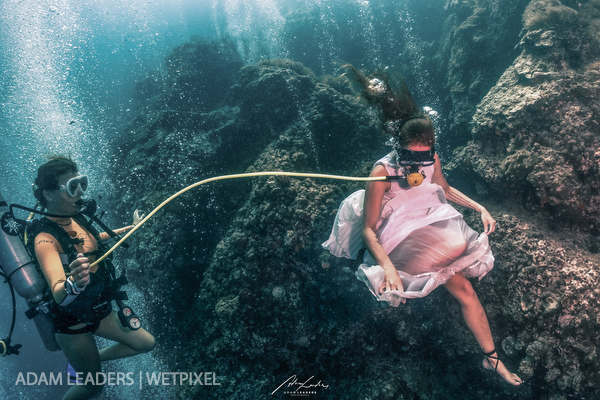
Luckily in Koh Tao, there is hardly any current and visibility can be decent at most times during that season, so we had that in our favor. For the Sail Rock site, we decided to bring 2 support divers and a pony tank with a long hose for Julia to breathe. Julia would descend with a diver and the pony tank while I scouted the location. We strategically placed a weight belt on Julia behind her dress to make her neutrally buoyant and would use a thin piece of line and a clip to secure her to the rocks just for safety since she would have no way to control her buoyancy. Just for the unknown we also strategically hid a dive knife on Julia on the most extreme chance that she might need to cut herself free. On the way down and in-between shots, Julia would have a mask handed to her so we could attempt to communicate. We outlined some hand signals for every situation we could think of, and I brought down a slate just in case. The other concern was not to disturb or damage the living environment, so we agreed to choose a location that would allow us not to do so, where the rock would be used to support the model.
We dived in and chose a location, a small ledge with a lovely anemone in the foreground and proceeded to secure Julia. We had a small amount of current at times, so we stayed pretty close to Julia and began shooting. Julia would signal us with OK when she was ready, remove her mask and hand it to a support diver who would swim out of frame, massage her own face to get rid of mask lines and try different poses as I shot and adjusted as needed. Once she needed a breath, she would give us an out of air signal, and everyone would come forward to offer air. During this time, she would be handed back the mask, clear it, and we would try and communicate what we needed. Then we would start the process again.
One problem that we ran into on Sail Rock that we didn’t plan for was other curious divers. While we were down there, more boats and divers arrived, and we had to “kindly” gesture the divers to get out of the frame. More than once, divers were just filming us with their GoPro right in front of our camera in the scene… I totally get it. It’s not every day you come around a corner underwater at 25 meters and see a beautiful woman in a gown with no equipment on. Surreal, I’m sure. Here are the results of that shoot:
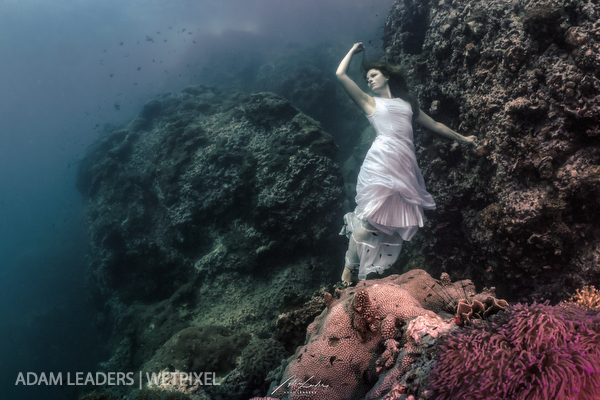
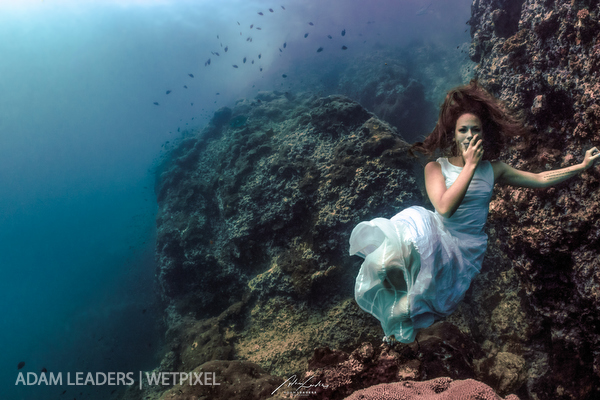
On the second day, we got word that the HTMS Sattakut wreck had excellent visibility, so we quickly arranged tanks and a private longtail boat. With the boat packed, we headed out to the dive site with about 30 min notice. This is very unusual where we were diving, typically only large dive vessels moor up to dive sites, so it was incongruous to see us moor up in our little canoe alongside the other boats who were there when we arrived. We definitely got some strange looks from the other divers that were there, who were all doing tech training. These were a group of divers on rebreathers looking at us like we were crazy for what we were doing. Nevertheless we jumped in and headed down to 27 meters. There were huge schools of fusiliers around us on the decent and the visibility was excellent! Julia brought down a skateboard (that we attached weights to) and attached herself to a line that was affixed to the stern of the ship and we experimented with different poses. Since she was quite a distance away from me to get as much of the wreck in the frame as possible, strobes were not needed allowing me to shoot in high-speed burst mode. This gave me a massive advantage in getting the right shot as the timing was crucial, as well as the amount of time between Julia’s breaths, was limited. Not to mention we were up against our short window of opportunity wanting to stay within our conservative no decompression limits. This ended up being a super cool looking shot with the surreal feeling of someone doing a huge jump over a warship canon with the dreamy flow of being underwater.
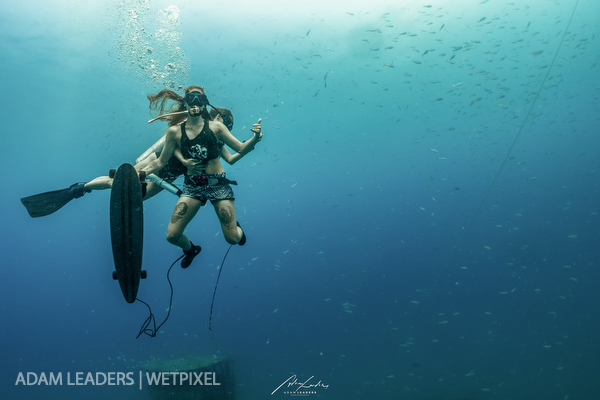
Running low on air and NDLs, we safely ascended with a safety stop and changed tanks and outfits.
Next, we wanted to do something like a Titanic scene “Jack, I’m Flying!” So we used the last of the available light and our air to capture what would become “The Sailor’s Angel.” After the shoot, we returned to the beach at sunset to curious looks from people playing volleyball and beginning their nighttime festivities. Scuba divers, big cameras and a woman in a soaking wet gown getting off of the boat…
Here are the results:
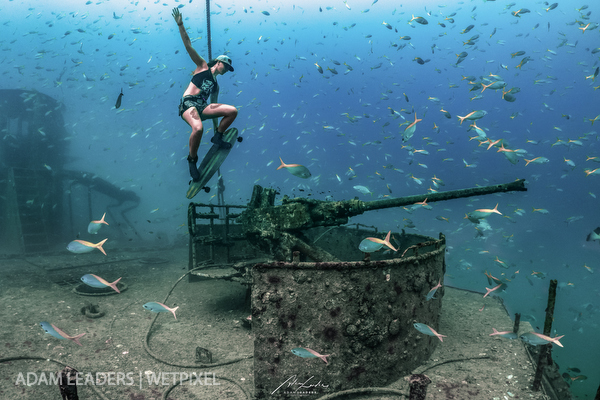
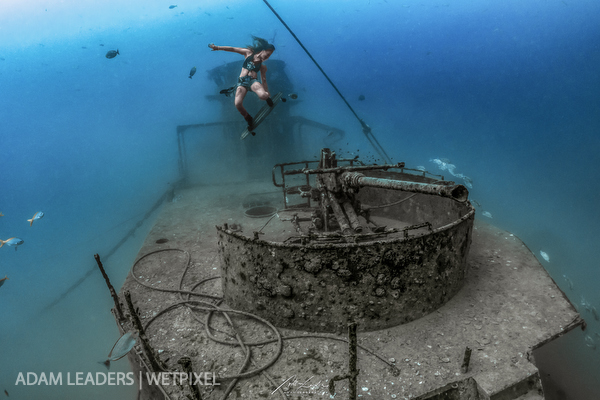
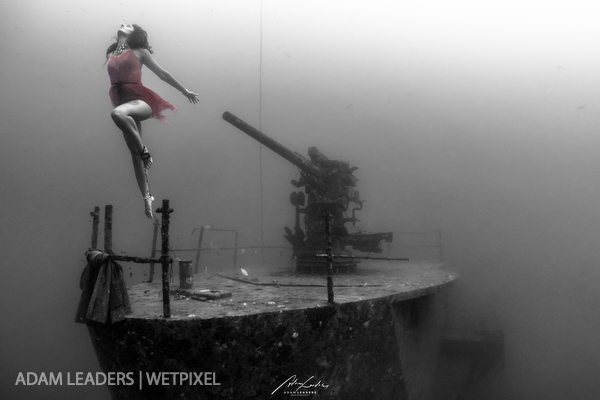
For those interested in modeling, Julia had this to say regarding the challenges of modeling underwater:
“Posing underwater is quite challenging and takes some time and practice to get used to. Two of the main factors are changed buoyancy and the burning sensation in your eyes. Taking your mask off underwater makes it almost impossible to recognize anything further away from you then 30cm, including the photographer’s exact location and possible dangers like sea urchins or sharp rocks nearby.
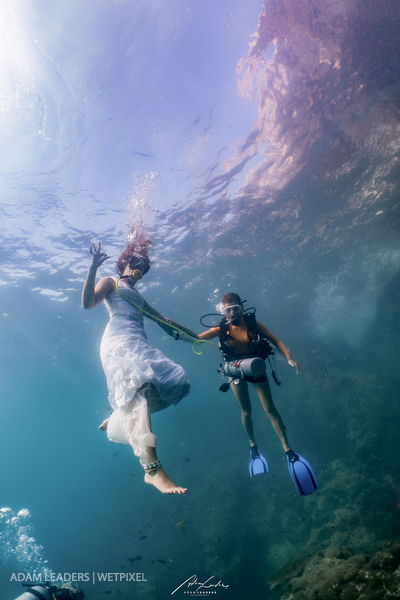
Opening your eyes for a long time underwater can be disturbingly painful and managing a perfect expression is therefore really difficult.
Moving into different positions and especially holding a position while floating plus managing your constantly shifting outfit and keeping long hair out of your face is especially challenging if currents occur but even without them is not easy. Also finding the perfect amount of weights is problematic as you try to hold a full lung of air to maximize the shooting time but can’t inhale too much in order not to become too buoyant.
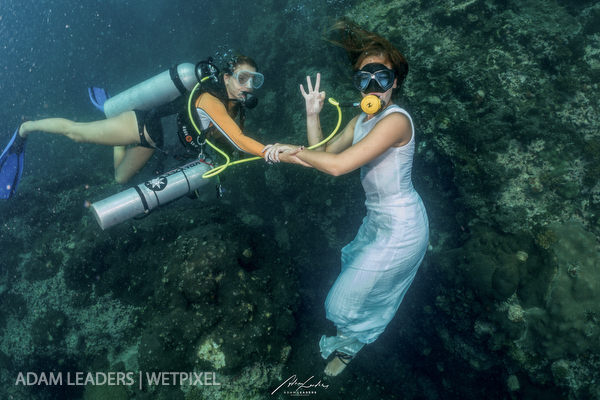
Another factor is the limited time you actually have to pose and the lack of conversation. Once you hold a breath, you only have a short time to find a position, adjust your hair and outfit, and try to hold it. It’s quite a gamble between trying different positions and facial expressions and giving the photographer enough time to take the pictures. Communication is always an issue, as you have to use hand signals.”
Overall, it was a fun and challenging shoot and well worth the effort and planning once we saw the results. For me, it’s always important to push your own limits of creativity and comfort to keep things exciting and interesting. Inspiration with photography, whether underwater or on land, is a cycle of trying new things, adjusting and trying again for better results. That’s what keeps it fun and exciting. I genuinely hope to do more shoots like this in the future!
To see more images from Adam and to find about upcoming photography workshops, please visit adamleaders.com and instagram.com/adlephoto.
Photo equipment used:
Sony RX100iv - YES a compact :)
Nauticam housing with a Nauticam WWL-1 wide lens
Dual Sea&Sea YS-D2 strobes - (on Sail Rock only)
About the Author
Adam Leaders - AdLe Photo
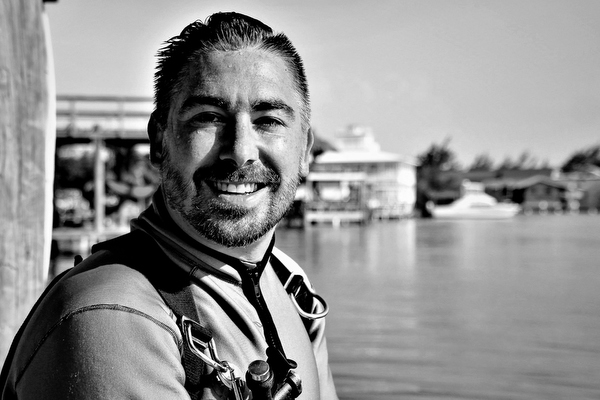
Adam is a dive instructor, underwater photographer/video producer and owner of ABV and BLO productions, a promotional media agency focused on the needs of dive centers and resorts. Adam runs photo workshops across the world for more information visit adamleaders.com and instagram.com/adlephoto or email Adam.